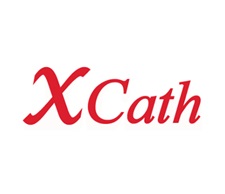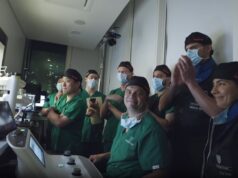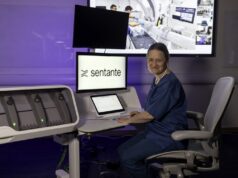 XCath has announced the incorporation of artificial intelligence (AI)-driven simulation, powered by NVIDIA’s Isaac for Healthcare, into XCath’s autonomous robotic system, which is intended to improve upon the current standard of care for stroke and other complex vascular conditions.
XCath has announced the incorporation of artificial intelligence (AI)-driven simulation, powered by NVIDIA’s Isaac for Healthcare, into XCath’s autonomous robotic system, which is intended to improve upon the current standard of care for stroke and other complex vascular conditions.
“One in four adults over the age of 25 will have a stroke during their lifetime, yet fewer than 5% have access to proper medical intervention,” said Eduardo Fonseca, chief executive officer (CEO) of XCath. “Through our collaboration with NVIDIA, we aim to democratise the gold standard in stroke care—mechanical thrombectomy—and make this life-saving therapy accessible to more patients worldwide.”
NVIDIA recently introduced Isaac for Healthcare, a platform specialised for the healthcare industry that can help developers to safely and efficiently design, test and deploy advanced AI-driven robotic and autonomous systems.
XCath states in a recent press release that it is leveraging Isaac for Healthcare to create comprehensive digital twins of its endovascular robot, treatment devices and human vasculature. By doing so, the company hopes it can accelerate prototyping and testing cycles for future robotic generations, create virtual training environments for surgeons and medical trainees, and build patient-specific procedural plans. Using preprocedural imaging allows surgeons to virtually rehearse complex procedures like aneurysm repairs on a patient’s exact anatomy, the release adds.
“XCath is embracing the next wave of AI in the field of surgical robotics that enables autonomous medical devices to sense, plan and perform complex actions in the real world,” said David Niewolny, director of business development for healthcare/medical at NVIDIA. “With the benefit of Isaac for Healthcare, XCath’s cutting-edge robotics platform has transformative operational capabilities that can dramatically impact patient care.”
The virtual twin infrastructure provided by NVIDIA’s Isaac for Healthcare can also serve as a training ground for developing autonomously navigating AI systems, XCath’s release continues. These systems will provide real-time, intraoperative feedback and can pause procedures upon detecting unexpected deviations, therefore functioning as a robust safety mechanism through a parallel autonomous system and mitigating risks from network fluctuations or potential security threats.
“Integrating Isaac for Healthcare into our development pipeline represents a quantum leap for XCath’s capabilities,” said James Tudor, vice president of AI at XCath. “This platform allows us to simulate thousands of surgical scenarios in the time it would take to run a single physical test, massively accelerating our AI training and robotic development cycles. The digital twin environment enables us to perfect autonomous navigation systems in a risk-free setting before deployment, compressing years of development into months. Isaac for Healthcare empowers us to transform development velocity into life-changing patient outcomes, dramatically accelerating our mission to democratise mechanical thrombectomy and reduce stroke’s devastating global impact.”










